ADT 2011 Annual Report Download - page 189
Download and view the complete annual report
Please find page 189 of the 2011 ADT annual report below. You can navigate through the pages in the report by either clicking on the pages listed below, or by using the keyword search tool below to find specific information within the annual report.-
 1
1 -
 2
2 -
 3
3 -
 4
4 -
 5
5 -
 6
6 -
 7
7 -
 8
8 -
 9
9 -
 10
10 -
 11
11 -
 12
12 -
 13
13 -
 14
14 -
 15
15 -
 16
16 -
 17
17 -
 18
18 -
 19
19 -
 20
20 -
 21
21 -
 22
22 -
 23
23 -
 24
24 -
 25
25 -
 26
26 -
 27
27 -
 28
28 -
 29
29 -
 30
30 -
 31
31 -
 32
32 -
 33
33 -
 34
34 -
 35
35 -
 36
36 -
 37
37 -
 38
38 -
 39
39 -
 40
40 -
 41
41 -
 42
42 -
 43
43 -
 44
44 -
 45
45 -
 46
46 -
 47
47 -
 48
48 -
 49
49 -
 50
50 -
 51
51 -
 52
52 -
 53
53 -
 54
54 -
 55
55 -
 56
56 -
 57
57 -
 58
58 -
 59
59 -
 60
60 -
 61
61 -
 62
62 -
 63
63 -
 64
64 -
 65
65 -
 66
66 -
 67
67 -
 68
68 -
 69
69 -
 70
70 -
 71
71 -
 72
72 -
 73
73 -
 74
74 -
 75
75 -
 76
76 -
 77
77 -
 78
78 -
 79
79 -
 80
80 -
 81
81 -
 82
82 -
 83
83 -
 84
84 -
 85
85 -
 86
86 -
 87
87 -
 88
88 -
 89
89 -
 90
90 -
 91
91 -
 92
92 -
 93
93 -
 94
94 -
 95
95 -
 96
96 -
 97
97 -
 98
98 -
 99
99 -
 100
100 -
 101
101 -
 102
102 -
 103
103 -
 104
104 -
 105
105 -
 106
106 -
 107
107 -
 108
108 -
 109
109 -
 110
110 -
 111
111 -
 112
112 -
 113
113 -
 114
114 -
 115
115 -
 116
116 -
 117
117 -
 118
118 -
 119
119 -
 120
120 -
 121
121 -
 122
122 -
 123
123 -
 124
124 -
 125
125 -
 126
126 -
 127
127 -
 128
128 -
 129
129 -
 130
130 -
 131
131 -
 132
132 -
 133
133 -
 134
134 -
 135
135 -
 136
136 -
 137
137 -
 138
138 -
 139
139 -
 140
140 -
 141
141 -
 142
142 -
 143
143 -
 144
144 -
 145
145 -
 146
146 -
 147
147 -
 148
148 -
 149
149 -
 150
150 -
 151
151 -
 152
152 -
 153
153 -
 154
154 -
 155
155 -
 156
156 -
 157
157 -
 158
158 -
 159
159 -
 160
160 -
 161
161 -
 162
162 -
 163
163 -
 164
164 -
 165
165 -
 166
166 -
 167
167 -
 168
168 -
 169
169 -
 170
170 -
 171
171 -
 172
172 -
 173
173 -
 174
174 -
 175
175 -
 176
176 -
 177
177 -
 178
178 -
 179
179 -
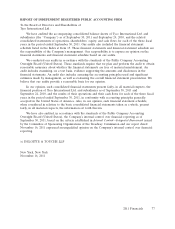 180
180 -
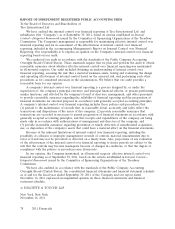 181
181 -
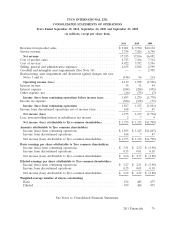 182
182 -
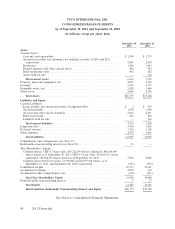 183
183 -
 184
184 -
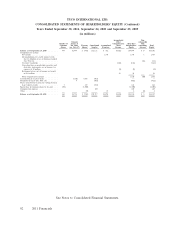 185
185 -
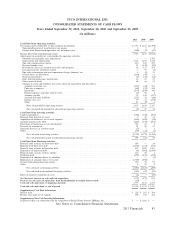 186
186 -
 187
187 -
 188
188 -
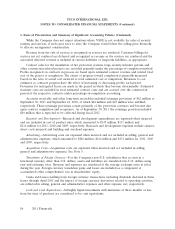 189
189 -
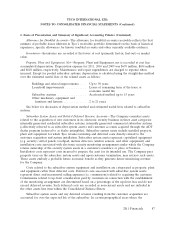 190
190 -
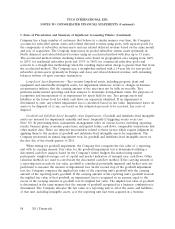 191
191 -
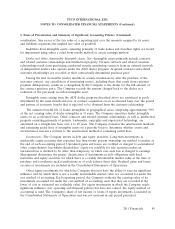 192
192 -
 193
193 -
 194
194 -
 195
195 -
 196
196 -
 197
197 -
 198
198 -
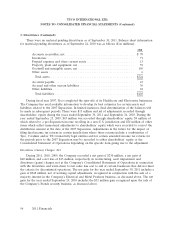 199
199 -
 200
200 -
 201
201 -
 202
202 -
 203
203 -
 204
204 -
 205
205 -
 206
206 -
 207
207 -
 208
208 -
 209
209 -
 210
210 -
 211
211 -
 212
212 -
 213
213 -
 214
214 -
 215
215 -
 216
216 -
 217
217 -
 218
218 -
 219
219 -
 220
220 -
 221
221 -
 222
222 -
 223
223 -
 224
224 -
 225
225 -
 226
226 -
 227
227 -
 228
228 -
 229
229 -
 230
230 -
 231
231 -
 232
232 -
 233
233 -
 234
234 -
 235
235 -
 236
236 -
 237
237 -
 238
238 -
 239
239 -
 240
240 -
 241
241 -
 242
242 -
 243
243 -
 244
244 -
 245
245 -
 246
246 -
 247
247 -
 248
248 -
 249
249 -
 250
250 -
 251
251 -
 252
252 -
 253
253 -
 254
254 -
 255
255 -
 256
256 -
 257
257 -
 258
258 -
 259
259 -
 260
260 -
 261
261 -
 262
262 -
 263
263 -
 264
264 -
 265
265 -
 266
266 -
 267
267 -
 268
268 -
 269
269 -
 270
270 -
 271
271 -
 272
272 -
 273
273 -
 274
274 -
 275
275 -
 276
276 -
 277
277 -
 278
278 -
 279
279 -
 280
280 -
 281
281 -
 282
282 -
 283
283 -
 284
284 -
 285
285 -
 286
286 -
 287
287 -
 288
288 -
 289
289 -
 290
290 -
 291
291 -
 292
292 -
 293
293 -
 294
294 -
 295
295 -
 296
296 -
 297
297 -
 298
298 -
 299
299 -
 300
300 -
 301
301 -
 302
302 -
 303
303 -
 304
304 -
 305
305 -
 306
306 -
 307
307 -
 308
308 -
 309
309 -
 310
310 -
 311
311 -
 312
312 -
 313
313
 |
 |
TYCO INTERNATIONAL LTD.
NOTES TO CONSOLIDATED FINANCIAL STATEMENTS (Continued)
1. Basis of Presentation and Summary of Significant Accounting Policies (Continued)
While the Company does not expect situations where VSOE is not available for sales of security
systems and services, if such cases were to arise the Company would follow the selling price hierarchy
to allocate arrangement consideration.
Revenue from the sale of services is recognized as services are rendered. Customer billings for
services not yet rendered are deferred and recognized as revenue as the services are rendered and the
associated deferred revenue is included in current liabilities or long-term liabilities, as appropriate.
Contract sales for the installation of fire protection systems, large security intruder systems and
other construction-related projects are recorded primarily under the percentage-of-completion method.
Profits recognized on contracts in process are based upon estimated contract revenue and related total
cost of the project at completion. The extent of progress toward completion is generally measured
based on the ratio of actual cost incurred to total estimated cost at completion. Revisions to cost
estimates as contracts progress have the effect of increasing or decreasing profits each period.
Provisions for anticipated losses are made in the period in which they become determinable. Estimated
warranty costs are included in total estimated contract costs and are accrued over the construction
period of the respective contracts under percentage-of-completion accounting.
Accounts receivable and other long-term receivables included retainage provisions of $62 million at
September 30, 2011 and September 24, 2010, of which $44 million and $45 million were unbilled,
respectively. These retainage provisions consist primarily of fire protection contracts and become due
upon contract completion and acceptance. As of September 30, 2011 the retainage provision included
$49 million that is expected to be collected during fiscal 2012.
Research and Development—Research and development expenditures are expensed when incurred
and are included in cost of product sales, which amounted to $147 million, $131 million and
$116 million for 2011, 2010 and 2009, respectively. Research and development expenses include salaries,
direct costs incurred and building and overhead expenses.
Advertising—Advertising costs are expensed when incurred and are included in selling, general and
administrative expenses, which amounted to $206 million, $164 million and $131 million for 2011, 2010
and 2009, respectively.
Acquisition Costs—Acquisition costs are expensed when incurred and are included in selling,
general and administrative expenses. See Note 5.
Translation of Foreign Currency—For the Company’s non-U.S. subsidiaries that account in a
functional currency other than U.S. dollars, assets and liabilities are translated into U.S. dollars using
year-end exchange rates. Revenue and expenses are translated at the average exchange rates in effect
during the year. Foreign currency translation gains and losses are included as a component of
accumulated other comprehensive loss in shareholders’ equity.
Gains and losses resulting from foreign currency transactions, including dividends declared in Swiss
francs through April 2011 and the impact of foreign currency derivatives related to operating activities,
are reflected in selling, general and administrative expenses and other expense, net, respectively.
Cash and Cash Equivalents—All highly liquid investments with maturities of three months or less
from the time of purchase are considered to be cash equivalents.
86 2011 Financials
